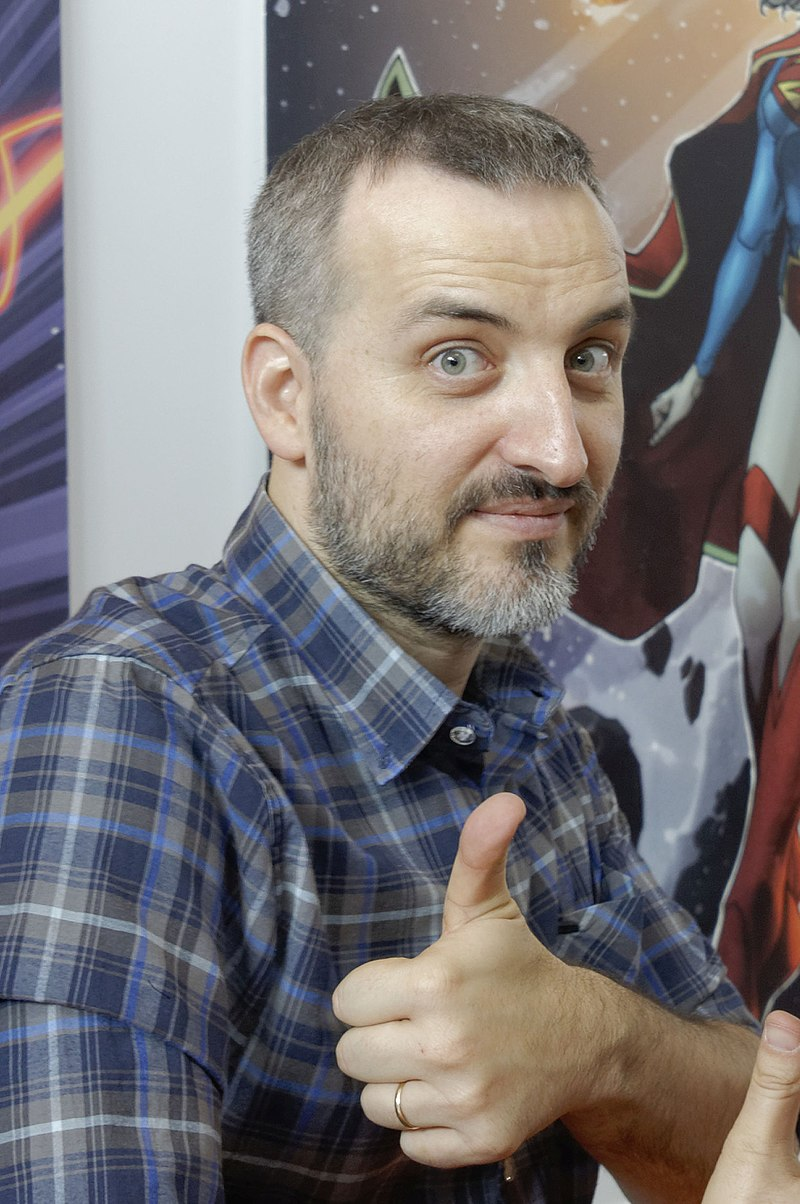Title of the work
Country of the First Edition
Country/countries of popularity
Original Language
First Edition Date
First Edition Details
Barrie Wade and David Lopez, Icarus, the Boy Who Flew. London: Franklin Watts, 2009, 32 pp.
ISBN
Genre
Illustrated works
Instructional and educational works
Target Audience
Children (Primary school children)
Cover

We are still trying to obtain permission for posting the original cover.
Author of the Entry:
Elizabeth Hale, University of New England, ehale@une.edu.au
Peer-reviewer of the Entry:
Lisa Maurice, Bar-Ilan University, lisa.maurice@biu.ac.il
Susan Deacy, University of Roehampton, s.deacy@roehampton.ac.uk

David López by Ra Boe. Retrieved from Wikimedia Commons, licensed under CC BY-SA 3.0 DE (accessed: December 28, 2021).
David Lopez
, b. 1975
(Illustrator)
David Lopez is an artist, illustrator, and comics artist and writer, who lives and works in Spain. He has several successful projects published through DC Comics, including his series, Fallen Angel and work on the Catwoman and All-New Wolverine series. He has illustrated several in the "Hopscotch" series of early readers.
Sources:
Blog (accessed: March 20, 2019)
Profile at en.wikipedia.org (accessed: March 20, 2019)
Bio prepared by Elizabeth Hale, University of New England, ehale@une.edu.au

Barrie Wade
, b. 1939
(Author)
Barrie Wade is Professor Emeritus of Education in English at the University of Birmingha in the United Kingdom. He has published widely on aspects of literacy, including academic work such as Reading for Real (1990), readers for children such as the Shakespeare for All series (1995, 2002). He has published many titles in the Franklin-Watts (now Hachette) Hopscotch" series of early readers. He is also a poet.
Sources:
Profile at hachette.com.au (accessed: March 20, 2019)
Profile at prabook.com (accessed: March 20, 2019)
Bio prepared by Elizabeth Hale, University of New England, ehale@une.edu.au
Summary
This simple illustrated text for beginning readers, with copious illustrations and short sentences, retells the myth of Icarus, showing Icarus living with his father, Daedalus, a "great inventor" (p. 5). After the king asks Daedalus to build a maze to hide a "terrible secret," (p. 7) he imprisons Daedalus and Icarus in a high tower. "They knew the king’s secret, so they could never leave." (p. 8). They collect the feathers left by the birds who come to pick up crumbs. Icarus says he wishes he was "free as a bird" (p. 11), and is impatient to fly once his father has made "two huge pairs of wings" (p. 14). Daedalus advises Icarus to take the middle path – to avoid the damp of the waves and the heat of the sun. Icarus agrees, "but he wasn’t really listening" (p. 17). The two leap from the tower, and Icarus soars into the air. He enjoys the freedom of flight, and heedless of his father’s cries, approaches the sun, "dizzy with excitement" (p. 25). Too late, he remembers, and swoops towards the water, but the feathers "fell away like flower petals," and Icarus falls "like a stone" while his father watches helplessly (pp. 28–29). "For a moment a few feathers floated like foam on the water, then sank. Icarus was lost forever." (p. 30). A grieving Daedalus throws his wings away. "He never flew again."
Analysis
Distinguishing this simple retelling of the Icarus myth are an elegant turn of expression and copious illustrations. Barrie Wade’s text uses similes from nature ("floated like foam on the water," "fell away like flower petals") which offer a delicate sense of loss, and serve a further purpose of introducing young readers to new vocabulary and ideas. David Lopez’s illustrations also show a complex grasp of visual literacy, showing the story from the literal and emotional perspective of the characters. (One can see from the varied perspective and use of line and colour, that Lopez has a career as an artist for various graphic novel franchises) For instance, when the father and son leave the tower, Icarus soars skywards in a double-page spread viewed from above, showing the sea and rocks, and Daedalus perched anxiously on the tower below. Daedalus is depicted as an older man, bald with a grey beard, and Icarus is depicted as a teenager, perhaps confirming his heedless enthusiasm. The story is retold as part of a series of readers aimed at primary school children, as is revealed by simple sentences, a clear plot line, and (apart from the similes), little in the way of humour, irony, or subtext. The death of Icarus is not avoided, but the word "lost" allows a potential gloss.


